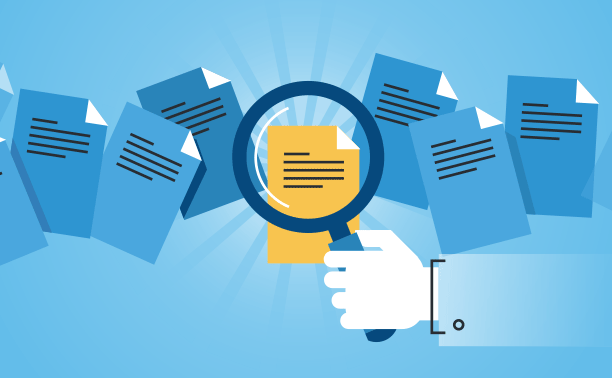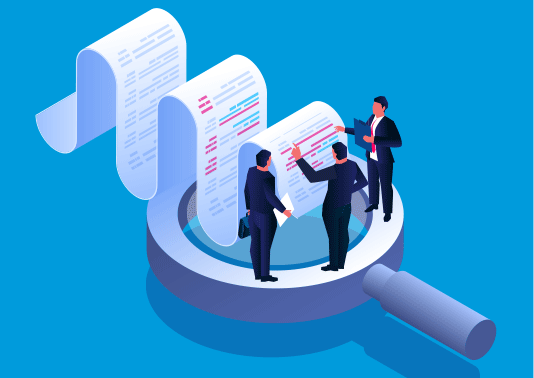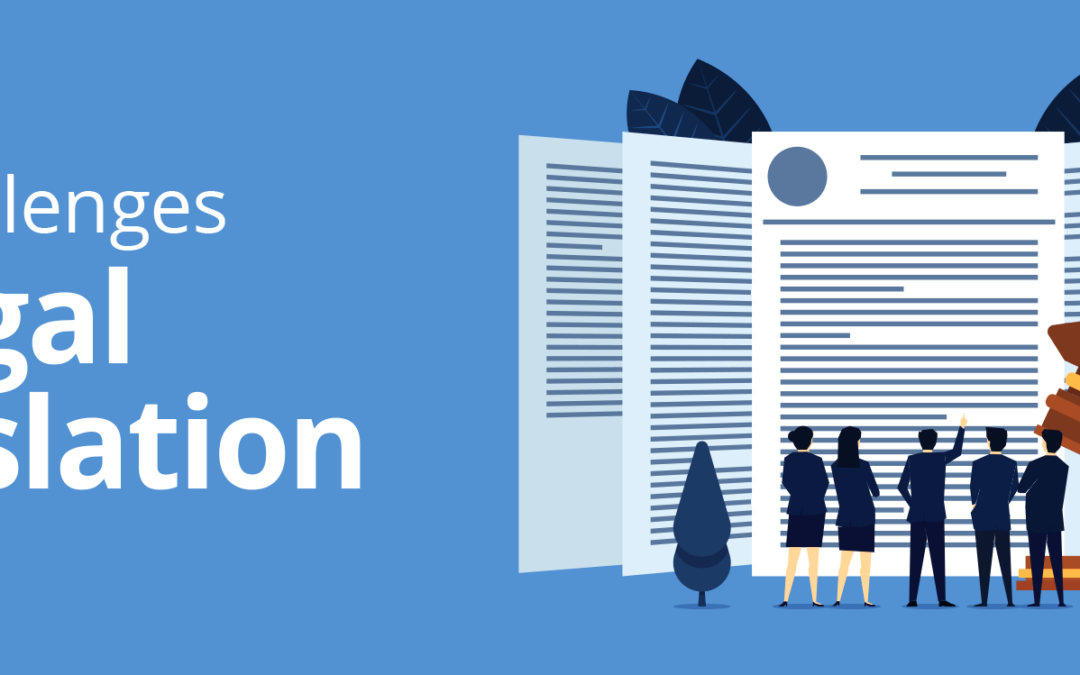Governments, courts, law firms and regulatory bodies: they’re all part of the thousands of organizations that make up the legal field. Of course, you’d expect legal translation to be at the heart of their operations. But you may be surprised to learn that it figures prominently in the communications and operations of companies in other fields, such as finance, accounting, marketing, transportation, tech and even life sciences.
Regardless of field or content, translations of legal documents or passages need to comply with the laws of each country involved or even those of different regions within a country. For example, Canada has language laws such as Bill 96, which sets new requirements for translation in Quebec and was passed into law in June 2022. Different laws derive from different legal systems too, which change from country to country. Some countries, like Canada, even have multiple legal systems.
Translated or otherwise, the readability of legal content is an increasingly important issue, especially for mass-market material in fields like sales, employment, housing or family.
Here are the top five challenges that organizations needing legal translation services have to contend with, and the solutions to match. A professional translation agency is a good place to turn for help with these issues. You’ll want to choose one that has an approach and the resources to align with your needs and offer tailored solutions. The right agency makes all the difference.
Legal translation: the top five challenges
Highly varied content and subsectors
References to laws and legal systems
Readability and popularization
Terminology
Compliance requirements

Challenge 1 – Highly varied content and subsectors
There are dozens of specialized subsectors in law, each producing a host of document types. See the table below for some key examples. Adding a layer to it all is the fact that legal elements exist throughout all kinds of content that have nothing to do with the legal field. Just think of contest rules (in marketing), or consent forms for clinical studies (in health). Conversely, many legal documents have sections related to other fields like securities or information technology. In short, there are a lot of different circumstances and they each have their own translation challenges.
The complex world of legal translation at a glance
Subsectors
Types of content
Securities regulation
Commercial law
Tax law
Civil law
Labour law
Estate law
Intellectual property law
Competition law
International law
Immigration law
Criminal law
Contracts and agreements
Licensing and patents
Trademark-related content
Mortgages and leases
Laws and bills
Court orders
Articles of incorporation
Investment fund prospectuses
Legal correspondence
Notarial deeds
Subsectors
Securities regulation
Commercial law
Tax law
Civil law
Labour law
Estate law
Intellectual property law
Competition law
International law
Immigration law
Criminal law
Types of content
Contracts and agreements
Licensing and patents
Trademark-related content
Mortgages and leases
Laws and bills
Court orders
Articles of incorporation
Investment fund prospectuses
Legal correspondence
Notarial deeds
THE SOLUTION
Complementary management and translation teams
An agency that follows tried and true processes to recruit and train the two teams of experts you’ll need is your best bet.
1. A management team
Solid project managers have the training and the experience required to analyze content from any field. They can spot any legal elements and assign them to the translation team best suited to handling the job’s particular ins and outs.
2. A translation team
Your language service provider must have legal translators: these are language experts specialized in translating and revising legal material, as you might have guessed. Legal translators tend to fit one of two profiles. Either they have a degree in translation from an accredited university where they specialized in legal translation, or they have degrees in both translation and law. Other than their degrees, legal translators may be certified by a professional order such as OTTIAQ (in Quebec), which empowers them to officially certify certain translations.

Challenge 2 – References to laws and legal systems
Every country has its own legal system and hundreds of laws. This means your agency needs to be able to make available to you, for each language, specialized experts from each country and each legal system.
The two main complications in Canada are language laws and bijuralism.
Language laws
For decades now, the translation of a great deal of content, much of it legal, has been mandatory under Canada’s Official Languages Act and Quebec’s Charter of the French language (Bill 101). Since 2022, the Act respecting French, the official and common language of Québec (Bill 96) has given Bill 101 in Quebec more teeth, such that an increasing number of documents are now subject to mandatory translation toward French. What’s more, an unprecedented volume of diverse legal documents must be translated by certified members of a professional order.
Bijuralism
In Canada, two different legal systems coexist along with different federal, provincial and territorial laws. Civil law prevails in Quebec and is governed by the Civil Code of Québec. Everywhere else in Canada, common law applies.
Over the last few decades, the legal community has made a serious effort to harmonize language and terminology between the Civil Code and common law. But legal translation in a bijural environment remains complicated and risky.
You need to be able to trust that your agency’s language experts are using the official version of excerpts from laws cited in your legal documents, rather than simply translating those passages themselves. Those experts face the challenge of sifting through documents from hundreds of potential sources that can include laws, codes and the like to find preexisting terms and translations.
To further complicate things, in many cases an original document and its translation might not even refer to the same system or laws. Take an English text that references common law, for example. Its French translation will refer to the Civil Code if it’s intended for a Quebec audience. However, if it’s intended for audiences across Canada, it will refer to both systems. Two different contexts yield two different translations.
Translators need to figure out exactly who the original text and translated version are for, as this will point them to the right system and laws.
THE SOLUTION
Finely honed analysis and research skills
Consider the legal framework, individual laws, the different versions of those laws, relevant reference documents and the target audience. A mistake on any of these can leave you open to trouble. The importance of the analysis and research work done by your agency’s translation and management teams can’t be overstated.
Project managers start by combing through every request you send them and analyzing your documents, reference material and instructions with the utmost care. Their goal is to make sure the translation team has everything they need to turn out their best work.
Next, the language experts carry out the necessary research in both your reference material and other relevant sources. This allows them to do two things: they’ll be able to cite the correct passages from existing sources, such as laws, and they’ll be in a position to correctly write or paraphrase passages that refer to official sources without quoting them directly. Through their research and sharp grasp of context, translators can even add short explanations if they think the target audience will need them to fully understand the translation.

Challenge 3 – Readability and popularization
Legal content is far from being just for jurists. One need only think of the mass-market contracts that govern the sale of electronics or household appliances. Legal content abounds in plenty of other sectors of concern to the average citizen, such as employment, family matters and housing.
The idea of clear language has been gaining traction in legal circles over the past few decades. The aim is to make legal content much more accessible to target audiences that may or may not have any legal background. But it isn’t as easy as simply avoiding complicated legal jargon. The style needs to be straightforward—the principle of readability—and self-explanatory where required—the principle of popularization.
Clear language makes justice more accessible, increases confidence in the legal system and speeds up case settlements. It’s also good for business, as it improves communication between companies and their client bases. In Quebec, it’s such a strong trend that the Quebec Bar has been offering training sessions and a guide on clear language for several years (both in French only).
THE SOLUTION
Advanced interpretation and writing skills
The translation team needs to fully understand each word, sentence and the overall message.
It’s the language expert’s job to determine the best target language formulation to accurately convey the original meaning of any passages that aren’t direct quotations from existing sources.
While the writing needs to be as clear and readable as possible for its audience, it also needs to be precise and thorough. For best results, language experts must be masters of the popularization techniques used in the legal field.

Challenge 4 – Terminology
Law is one of the rare fields where the terminology is for the most part already set in laws and other reference documents that exist for each country and legal system in the world. In other words, legal translators usually don’t need to create equivalents for specialized terms. But that’s not to say that legal terminology is without challenges. Language experts still have to find the right equivalent terms in existing documentation that can comprise tens or even hundreds of millions of words.
Compounding this challenge is the fact that terminology varies from one country to the next due to different legal systems, laws and documentation. In Canada, our legal translators face three specific issues:
- Common law content frequently lacks an official French translation. As a result, it’s not unusual to see several unofficial translations of varying degrees of reliability.
- Some legal concepts in common law simply don’t have a perfect match in the Civil Code of Québec. Either the closest equivalent in the Civil Code is still considerably different, or there’s no equivalent at all.
- There’s an English translation of the Civil Code of Québec, but the terminology can be rather different from what you read and hear in common parlance. You took out a loan to purchase property? That’s a hypothec, rather than the widely used mortgage.
THE SOLUTION
A deep familiarity with the reference material
Your agency’s legal translation team needs to be able to efficiently find the best equivalent of each term by wading through copious sources of complementary information, such as laws and translations, official or otherwise. Armed with in-depth knowledge and a meticulous approach, legal translators can find terminological and conceptual equivalents quickly and efficiently.
When a term doesn’t have an official translation, you can trust a specialist to pick out the best option among various unofficial translations appearing in different sources. It’s also a mark of their competence that, in some cases, they’ll add brief explanations to help readers make sense of the translated material. For instance, for a common law concept that is raised in an English text, the French version might need to refer to the Civil Code. If the original concept doesn’t have a clear equivalent in the Civil Code, the reader will need some form of explanation.

Challenge 5 – Compliance requirements
Organizations that create or translate legal content must comply with a strict regulatory framework. For their part, translation agencies have to contend with the legal, administrative, professional and operational requirements specific to each client. Here are three examples that illustrate the challenge at hand.
- Confidentiality obligations
The simple everyday exchange of documents by unsecured email carries the risk of illicit access and disclosure that can have serious repercussions when confidential legal material is involved. There are so many possible errors, each with their own potentially costly consequences. It’s all too common among language service providers and their clients for these requirements to be poorly understood or neglected. - Quality criteria
There’s a lot to lose if your legal content is poorly translated. In Canada, a contract is always interpreted from the perspective of the receiving party. If a poorly translated contract goes into litigation, the interpretation will favour your client. - Meeting deadlines
Regardless of the length of the content, your agency needs to be capable of meeting deadlines that are often set based on official proceedings, such as trials, hearings or regulatory transactions. Tardiness can expose you to heavy losses or penalties.
THE SOLUTION
Certification under language industry standards
The best guarantee you can get from an agency is proof of its certification under language-industry quality standards:
- Canadian translation services standard CAN/CGSB 131.10
- European translation services standard ISO 17100
- International postediting standard ISO 18587
All three of these certifications require an independent audit every two years. It’s important to know that a certified agency may be stripped of its certification if it fails any of its regular audits.
How a certified agency protects you better
By complying with language-industry quality standards, an agency satisfies two requirements pertaining to client relations.
- Work processes: the agency must have standardized and professional processes in place for analyzing client requests and ensuring that it’s able to meet all of their specifications.
- Documentation: the agency has an obligation to document specifications in an official agreement with each client organization.
Certification also proves that an agency complies with all quality, efficiency and security standards.
- The recruitment of reliable and competent professionals who are bound by a confidentiality agreement
- The skills and knowledge that each language professional must possess
- State-of-the-art tools and systems that the agency should be equipped to use
- The numerous mandatory steps in the translation and revision process
- The many important steps in the project management process
- The key elements of the quality and confidentiality management system
Performance, diligence, discretion, user-friendliness, traceability and continuous improvement are all advantages that are intrinsically linked to certification. Your company’s legal translation requests deserve no less.

Versacom: Your trusted partner in meeting these challenges
Not only does Versacom serve a host of law firms, but also governments, regulatory bodies, accounting firms and financial institutions. Several organizations outside the legal field (marketing, transportation, life sciences, etc.) also trust Versacom to fulfill their legal translation needs.
With fully certified language experts, project managers, processes and resources, our agency has everything it takes to guarantee quality, security and efficiency in all of your legal translation projects, regardless of subsector or document type.
Our experts are only too happy to put Versacom’s capacity and professionalism to work for you. Our support starts with strategic and linguistic analysis of your organization’s needs, and ends with the delivery of all the professional services you require, in all relevant languages.
Contact us to find out how we can become partners.

